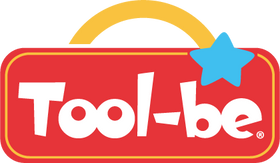
newborn reflexes
newborn reflexes
These particular actions are due to the fact that from birth and even from uterine life, our brain has automatic muscular responses, that is, they are not voluntary or thoughtful, actions are simply triggered by a certain stimulus.
In your newborn baby, the presence and intensity of these reflexes is a sign that his brain is in good condition. These primary or primitive reflexes will gradually disappear as the baby grows and develops.
A reflex that is still present after the age at which it would normally disappear may be a sign of brain damage or damage to the nervous system .
![]() Next , we will tell you what those reflexes are :
Next , we will tell you what those reflexes are : ![]()
![]() Palmar and plantar grasp reflex
Palmar and plantar grasp reflex

The characteristic of this reflex is the grip, this appears if you put your finger in the palm of the baby's open hand; The hand will immediately close tightly and squeeze your finger.
Something very similar happens when you press with your finger, the sole of your baby's foot close to the base of the fingers, these will immediately close.
The palmar and plantar grasp reflex disappears at 4 or 5 months of age of the baby.

![]() Search or sniff reflex
Search or sniff reflex
This reflex is triggered when you stroke your baby's cheek; Sensing the stimulus, he will turn his head to the caressed side and begin to make sucking movements with his mouth. 
We talk about sniffing because sometimes this reflex makes the baby move his head as if sniffing, usually when he is close to his mother's areola, in order to find the milk.
![]() sucking reflex
sucking reflex

This reflex is that the baby sucks when the area around the mouth is touched , usually after the search and is basically aimed at ensuring survival through feeding.
The search and sucking reflex disappears at 4 months. The feeding of the baby goes from being involuntary to being voluntary by suction.
![]() Automatic gait reflex or moonwalk
Automatic gait reflex or moonwalk
It is triggered when the soles of your baby's feet touch a hard surface , it seems to rest on it; We immediately observe that the baby tenses the gluteal area and makes movements "as if walking on air" that is why it is also known as " the moonwalk" because it resembles the way astronauts walk on the moon, taking great steps. 
The above These reflexes are activated together, they are known as biological nutrition reflexes, since all of them, appearing one after another, are aimed at making it easier for the baby to find the mother's areola and be able to feed. The newborn baby placed on the mother's abdomen moves in the direction of the breast; what is known as “the drag to the chest”.
When the baby is two months old this reflex should disappear.
![]() Moorish reflex
Moorish reflex
This is an early warning reflex in the face of a sudden or unexpected sound or tactile stimulus that allows the baby to communicate in some way that he feels in danger.
The normal response is for the baby to have a startled look, their arms move to the sides with palms facing up, usually after this they cry loudly for a minute. As the reflex ends, the baby draws the arms back toward the body and then relaxes.

It is common to hear in families that "the baby is nervous, anxious, spoiled or spoiled" because he has this reflex, or "that his mother cried a lot during pregnancy" and that is why the baby is crying and skittish. However, it is something automatic that is triggered in the brain and has nothing to do with an emotional state.
Normally, the moro reflex disappears between 3 and 4 months.
It is important to note that when these reflexes do not disappear within the estimated time, the baby should be evaluated by a pediatrician to establish the cause.
Find this and more information on our YouTube channel, in the section Reflexes of the newborn | Tool-be mini-courses
Don't forget to subscribe!
🧰 We give you the tools 🧰
Approved by:



